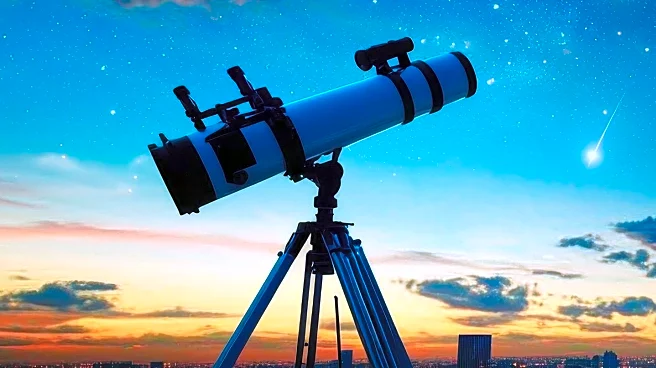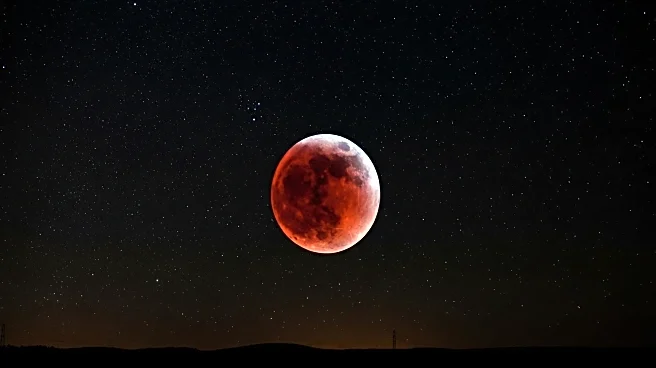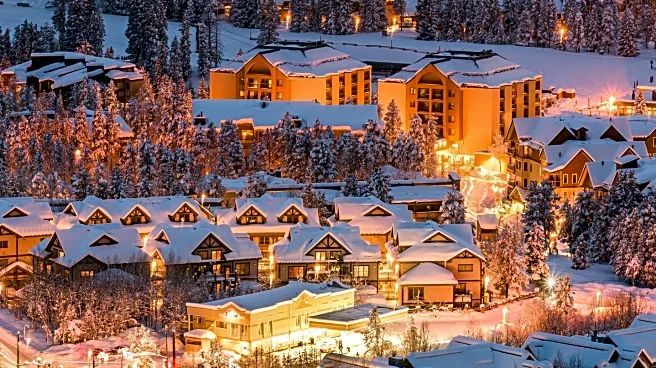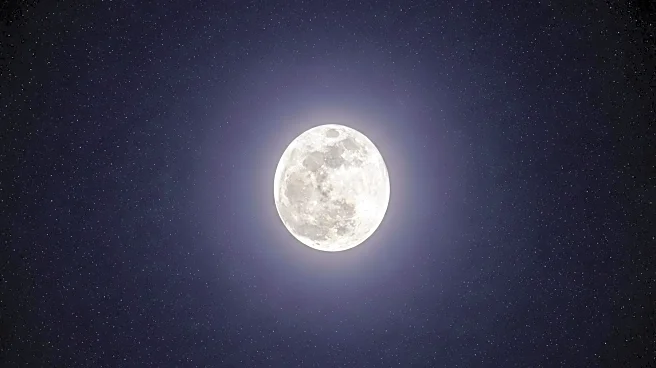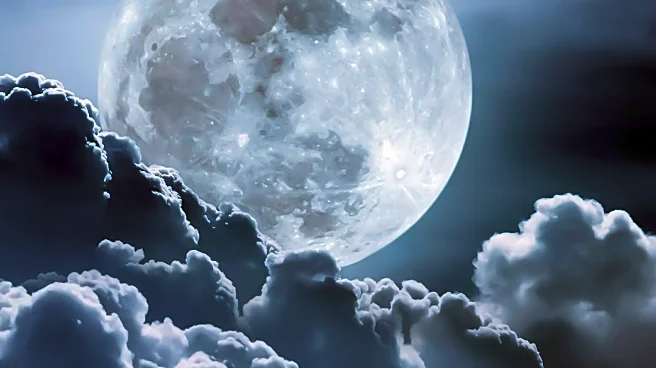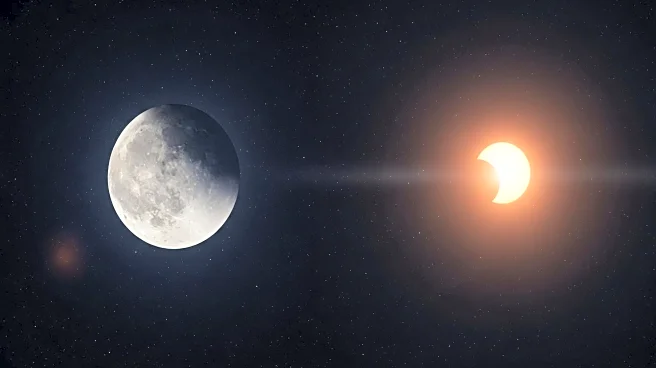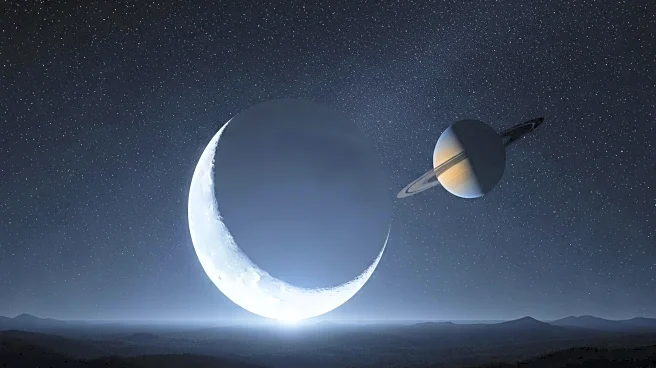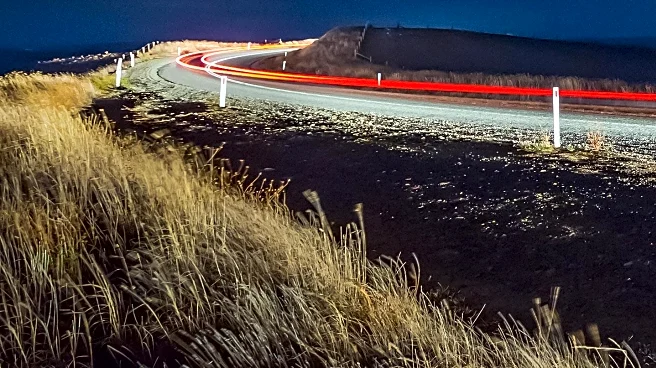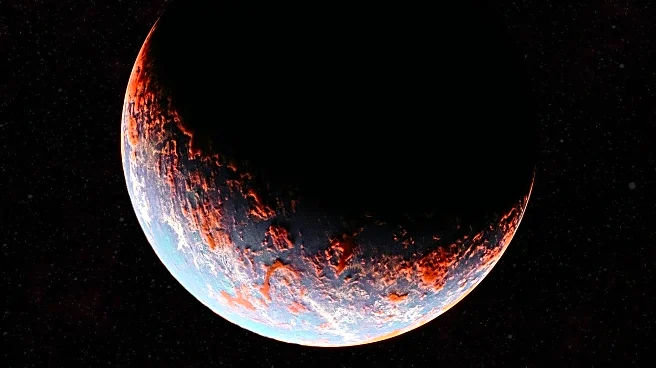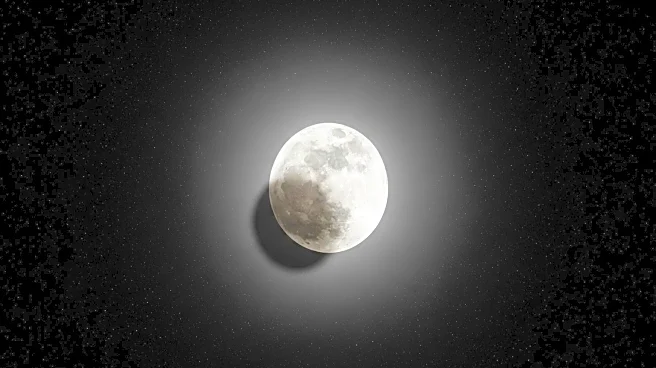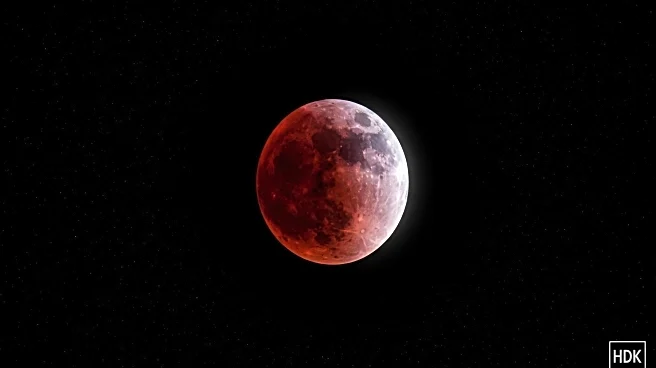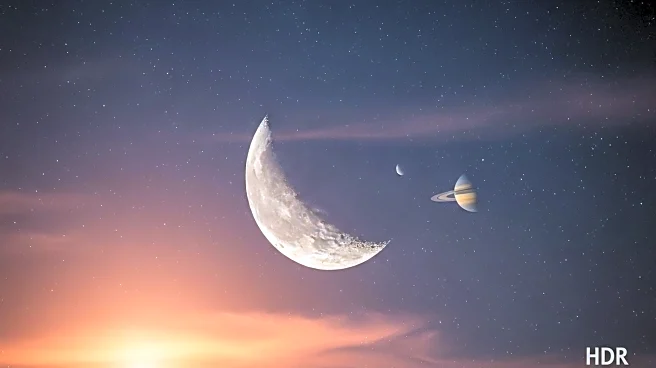What is the story about?
What's Happening?
Singapore offers opportunities to observe various astronomical events, despite its urban landscape. Residents can witness events such as supermoons, lunar and solar eclipses, meteor showers, and comets. The next supermoon, known as the Harvest Moon, will occur on October 7, 2025. A total lunar eclipse is expected on March 3, 2026, while a partial solar eclipse is scheduled for August 2, 2027. The Draconid meteor shower will be visible from October 7 to 10, 2025. These events can be observed with the naked eye or with equipment like binoculars and telescopes for a better experience.
Why It's Important?
Observing astronomical events provides educational and recreational opportunities for Singaporeans, fostering interest in science and nature. These events offer a chance to connect with the natural world and appreciate the universe's wonders. They also serve as a reminder of the importance of preserving dark skies and reducing light pollution. Public observatories and stargazing spots in Singapore enhance accessibility to these events, promoting community engagement and scientific curiosity.
What's Next?
Singaporeans can prepare for upcoming astronomical events by planning visits to recommended stargazing locations such as Yishun Dam, Upper Seletar Reservoir, and Marina Barrage. Observatories like the Singapore Science Centre and Woodlands Galaxy CC offer guided tours and telescope access for enhanced viewing experiences. As these events approach, residents can stay informed through astronomy apps and community groups dedicated to stargazing.
AI Generated Content
Do you find this article useful?
